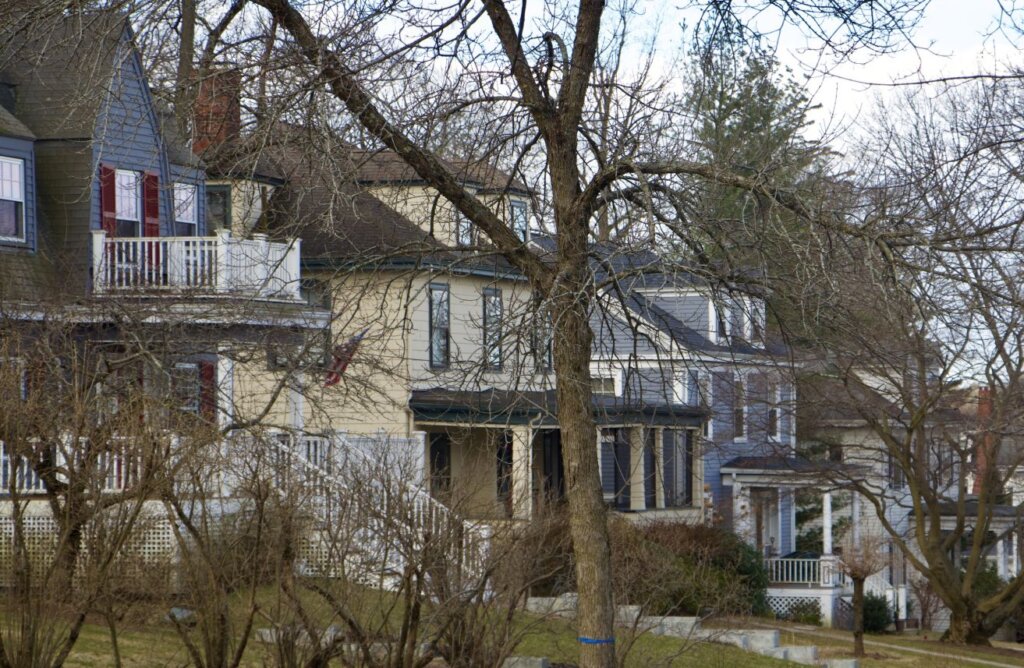Breaking Down Asset Types by Race

By Peter Ciurczak
Net wealth is the difference of two values; that is, assets (the positive side of the ledger) minus liabilities, or debt (the negative side). While most of our research on racial wealth equity has focused on net wealth, in this brief we take a closer look just at assets and compare across race. In a subsequent brief, we’ll look more closely at different forms of debt. Using the Survey of Consumer Finances, we differentiate between two main asset classes: Nonfinancial assets, like equity in homes, businesses, and cars (purple in the graphs below), and financial assets like stocks and retirement accounts (blue).
Values throughout this brief may look surprisingly high, and that’s for two primary reasons: 1) We focus on average values, rather than median, because the source data we rely on presents it that way; and 2) as noted above, looking at assets counts only positive values without netting out any liabilities. To get a complete economic picture of household wealth, one needs to look at more than just assets in isolation as we do here.
Some of our key takeaways:
- White and Asian families have far more in total assets ($1.5 million and $2.1 million respectively) than Black and Latino families (both around $300,000).
- Homes make up around half of total assets for Black and Latino families, while they make up around a quarter for White families and slightly more than that for Asian families.
- Black and Latino families are more likely to be invested in nonfinancial assets, while White and Asian families are split almost evenly between financial and nonfinancial.
First, let’s look at a summary table of all asset values by race as of 2022. And then afterwards we’ll explore these differences in greater detail by race and over time.
Asset Value Breakdown for White Families
White families not only have relatively high asset levels, but they also benefit from portfolio diversity, as their investments are spread across various asset types rather than dominated by any single category. This diversification provides financial stability during economic downturns. For example, during the Great Recession, which hammered the housing market, White families faced less severe financial repercussions, largely due to this diversification.
Also notable is that financial assets for White families grew from $177,000 in 1992 to $660,000 in 2022 (274 percent), the greatest percent increase across all racial groups and asset classes. These gains came primarily from retirement accounts, which grew from $45,000 in 1992 to $235,000 by 2022. The value of nonfinancial assets among White families also appreciated significantly, growing from $360,000 in 1992 to $837,000 by 2022 (an increase of 134 percent).
Asset Value Breakdown for Asian Families
For the first time in 2022, the Survey of Consumer Finances reported data on Asian American families alone, separated out from “Other.” These new data show that the distribution of Asian American assets roughly matches the distribution of White assets — although at more than $2 million, the average Asian American family has even greater asset wealth (again, this is before factoring in liabilities).
It’s critical to note here that crude racial categorizations often mask large intra-group disparities, so these findings should not be interpreted to suggest that no Asian families struggle with economic insecurity. Previous research we’ve done in partnership with the Asian Community Fund suggests that despite being home to many high-income/high-wealth Asian American families, Greater Boston is also home to many lower-income/lower-wealth Asian American families. This diversity reflects national findings suggesting that Asian Americans have the largest intragroup income inequality of any racial group.
Asset Value Breakdown for Black Families
Total asset values for Black families are the lowest among all groups, with homes making up the bulk of that value, followed by retirement accounts. Because homes are so critical to Black wealth, it’s worth exploring how the sub-prime lending crisis impacted these assets. Ahead of the crisis, the value of Black homes increased slowly but steadily. With housing already making up half of their asset portfolio, new access to riskier, higher-value mortgages in the 2000s helped grow overall housing values for Black and Latino borrowers especially. In just six years Black homes roughly doubled in value—from $75,000 in 2001 to $147,000 in 2007.
But this balloon deflated soon afterwards. The 2007-2009 recession resulted in many families not being able to make housing payments, resulting in the erasure of tens of thousands of dollars of Black wealth as homes were repossessed by lenders or sold at a loss. Lingering impacts of the Great Recession mean that even today, Black assets are only now approaching and exceeding their 2007 values.
Apart from homes, retirement accounts are the second most valuable asset category for Black families. Since 1992, the value of these grew from $9,600 on average, to just over $40,000 in 2022. Concerningly though, this is about $4,000 less than 2019. Black families are the only racial group for which these accounts declined in value from 2019 to 2022.
It’s worth noting that the Survey of Consumer Finances does not include the projected value of defined benefit pension (DB) plans or Social Security income. While workers of other racial groups obviously also receive these benefits, Black workers are a bit more likely to hold (or have held) government jobs with defined benefit pensions. At retirement these assets make up significant components of Black wealth, enough to help close a portion of the wealth gap between White and Black households.
Asset Value Breakdown for Latino Families
At around $168,000, homes make up just over half of the total value of Latino assets. As a percentage, this is more than any other group. As with Black families, Latino families saw significant home value appreciation ahead of the Great Recession, reaching more than $190,000 in 2007. And, similarly, Latino housing values collapsed during the recession. Unlike Black families however, Latino families’ home values in 2022 remain significantly below their 2007 highs.
Notably, Latino families have few resources invested in financial accounts. And most of this is held in retirement accounts. In 1992 these accounts had an average value of about $6,485, increasing to around $33,000 by 2022. Despite this growth, these accounts hold about $7,000 less than among Black families, and $160,000 less than White and Asian retirement accounts.




